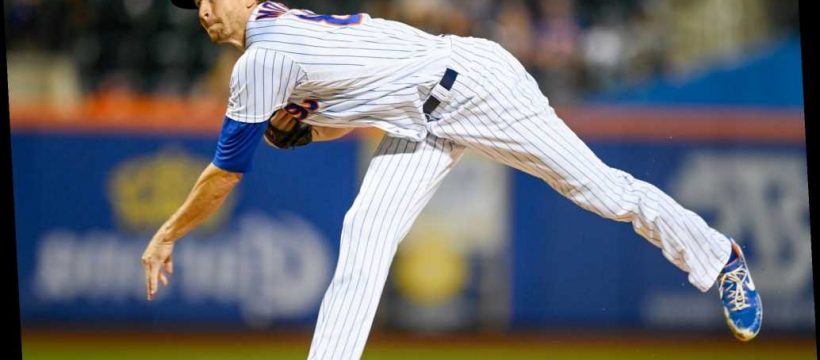Pete Alonso hit his 20th homer on June 4, 2019, and Hyun-jin Ryu dropped his ERA to 1.35 and all 30 major league teams were in action, moving more than half the league on this date (19 teams in all) to at least 60 games played.
As we all try to grasp what may be coming in this unique season, however, it is not Alonso’s homer total or Ryu’s microscopic ERA that grabbed my attention. It was that 625 pitchers had already been used, including 242 starters. That was with six weeks of familiar spring training prep, no interruption of play and without a deadly pandemic still swarming the world.
The total number includes position players who pitched and the starter total includes openers. Still, that is 21 pitchers on average per team in what would be classified as through 60 games of a standard season. So what is going to be needed now for 60 games — and then a postseason? When spring training will be a three-week rush job. When pitchers built up in February and March before shutting down for 3 1/2 months? When COVID-19 threatens to sideline who knows how many players as MLB tries to navigate this minefield through October?
Spring training is always thought of most as a period to get pitchers ready. The six-week duration is a quid pro quo with municipalities in Arizona and Florida to give them that much in commerce in exchange for whatever was done financially to help build spring training complexes. And on the field it is for the steady build up of pitcher innings. Hitters probably need no more than half that time, probably less.
In the old days when Mordecai Brown had three fingers, the pitchers came to camp pretty much starting at scratch. But these days many pitchers come to camp with a base of throwing and having worked during the offseason to maintain conditioning. We can assume that even within the pandemic that a good percentage of pitchers found a way to maintain their bodies and arms. Still, normal patterns have been destroyed. Plus, the modern game — something that would make good ole Three Fingers Brown and his 271 career complete games cringe — has evolved to deploying multiple pitchers to finish games — and a few dozen to finish seasons.
Under these circumstances we can expect more use of the opener than ever and already teams are saying that for the first turn or two around the rotation expect even standard starters being limited to just three or four innings. Do the math — figure in the environment — and you could imagine that teams are going to need more than 21 pitchers on average to cover the 60 games, if the sport is fortunate enough to get in the 60 regular-season games.
If this season had been played out pandemic-free, rosters were going to be 26 with a limit of 13 pitchers at any time (28 players in September when rosters expanded, with 14 pitchers). But now there is no governor for pitchers on rosters that will begin at 30, drop to 28 after 15 days of the season and to 26 on the 29th day of the season.
There will be a taxi squad for each team run concurrently with the season and you can expect when it comes to pitching that teams will dip often into that reserve to get fresh arms (let’s hope it is not to manipulate service time since players on the taxi squad do not accumulate major league service).
Keeping pitchers healthy in this atmosphere has probably never been more difficult or important. Consider that a starter who misses three turns due to an injury in a 162-game season is absent for fewer than 10 percent of his starts. Three starts now will be 25 percent of a starter’s action. In such a condensed season three starts by someone such as Jacob deGrom or Gerrit Cole could be the difference between making what is still going to be a 10-team postseason rather than the 16 that ownership desired.
Plus which 60 games do you get from the pitchers? Through June 4 last year, deGrom had a 3.49 ERA, Cole 3.94. DeGrom would finish at 2.43 and win a second straight NL Cy Young. Cole would be at an AL best 2.50 and finished second for the Cy.
If you are interested, Alonso’s 20 homers actually were tied with Cody Bellinger for second in the NL, trailing the 22 of Christian Yelich. You know who led the AL on June 4? That would be Gary Sanchez at 18, tied with Minnesota’s Eddie Rosario. Ryu’s 1.35 ERA led the NL, Minnesota’s Jake Odorizzi led the AL at 1.96.
If the season ended that day, the three AL teams that won divisions — the Yankees, Twins and Astros — were all in first place. The Rays would have been a wild card, like they ended up being, but the second would have been a tie between the Rangers and Red Sox — with the A’s not making it as they did. In the NL, the Dodgers would have won the West as they did, but the Cubs and Phillies — neither of whom made the postseason — would have won the Central and East. The Brewers, who were a wild card, and the Braves, who were NL East champs, would have been the wild cards.
But the Cardinals, who won the Central, would have missed the playoffs, as would the Nationals, who eventually won a little thing called the World Series.
Through June 4, 2019, it was possible to believe that the best long-term move for the Nationals was to trade their ace, Max Scherzer. In the finale to the 2019 campaign — Game 7 of the World Series — Scherzer dramatically started for Washington with a bad back.
Share this article:
Source: Read Full Article

